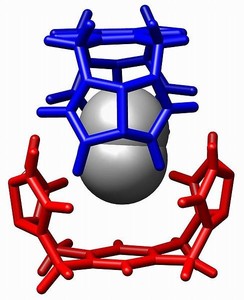On 4 April 2018, the US Food and Drug Administration (FDA) issued a new draft guidance document for non-biological complex drugs (NBCDs). The finalized guidance covers what applicants should submit for new drug applications (NDAs) and abbreviated new drug applications (ANDAs) for liposome products.
FDA issues final guidance on liposome drug products
Non‐Biological Complex Drugs/Guidelines
|
Posted 27/04/2018
 0
Post your comment
0
Post your comment

A liposome is a spherical vesicle having at least one lipid bilayer. The liposome can be used as a vehicle for administration of nutrients and pharmaceutical drugs. Liposomes may be seen as the front runners of the nanomedicines family, e.g. polymeric micelles and colloidal gold dispersions. Therefore, much of the experience gained with these carrier systems may be applied to other nanomedicines.
Like biologicals, NBCDs consist of different (closely related) structures that cannot be fully quantitated, characterized or described by physicochemical analytical tools. The composition and quality of NBCDs are dependent on the manufacturing process and controls – just as is the case with biologicals. Examples of NBCDs include nanomedicines, such as liposomes, polymeric micelles, glatiramoids, iron-carbohydrate complexes and nanocrystals, as well as dry powder inhalers.
FDA does not formerly recognize NBCDs, with originators required to follow the NDA route and follow-on NBCDs using the generics – ANDA – route. The agency has, however, issued draft guidance documents for certain NBCD families, e.g. liposomes, different iron carbohydrates (iron sucrose, iron gluconate, ferumoxytol) and cyclosporine ophthalmic emulsions [1].
The guidance on liposome products updates the agency’s revised draft, which was published in October 2015 [1]. The guidance discusses the following topics for liposome drug products:
- chemistry, manufacturing and controls (CMC)
- human pharmacokinetics and bioavailability or, in the case of an ANDA, bioequivalence
- labelling in NDAs and ANDAs.
Liposome Drug Products
Date: April 2018
https://www.fda.gov/downloads/drugs/guidances/ucm070570.pdf
The recommendations in the guidance focus on the unique technical aspects of liposome drug products. The guidance does not provide recommendations on clinical efficacy and safety studies, non-clinical pharmacology/toxicology studies or drug-lipid complexes.
In addition, it does not include recommendations for biologics license applications (BLAs), although the agency says that ‘many scientific principles described in this guidance may also apply’.
The guidance also states that in connection with ANDA submissions, recommendations in any product-specific bioequivalence guidances should be considered. To date, FDA has only produced four product-specific guidance documents for liposomes. These include draft guidance for amphotericin B, bupivacaine, daunorubicin citrate and doxorubicin. The guidance documents give recommendations for clinical andin vitrostudies to demonstrate bioequivalence [2].
Related article
EU guidelines for follow-on NBCDs
References
1. GaBI Online - Generics and Biosimilars Initiative. Regulations for follow-on NBCDs [www.gabionline.net]. Mol, Belgium: Pro Pharma Communications International; [cited 2018 Apr 27]. Available from: www.gabionline.net/Non-Biological-Complex-Drugs/Reports/Regulations-for-follow-on-NBCDs
2. GaBI Online - Generics and Biosimilars Initiative. US guidelines for follow-on NBCDs [www.gabionline.net]. Mol, Belgium: Pro Pharma Communications International; [cited 2018 Apr 27]. Available from: www.gabionline.net/Non-Biological-Complex-Drugs/Guidelines/US-guidelines-for-follow-on-NBCDs
Permission granted to reproduce for personal and non-commercial use only. All other reproduction, copy or reprinting of all or part of any ‘Content’ found on this website is strictly prohibited without the prior consent of the publisher. Contact the publisher to obtain permission before redistributing.
Copyright – Unless otherwise stated all contents of this website are © 2018 Pro Pharma Communications International. All Rights Reserved.
Source: US FDA
FDA includes follow-on versions in its new cyclosporine guideline

Non‐Biological Complex Drugs/Guidelines Posted 29/04/2016
FDA includes follow-on versions in its new liposome guideline

Non‐Biological Complex Drugs/Guidelines Posted 26/02/2016
The best selling biotechnology drugs of 2008: the next biosimilars targets







Post your comment